(E)-Chalcone
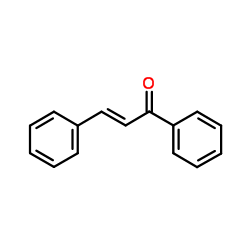
(E)-Chalcone structure
|
Common Name | (E)-Chalcone | ||
|---|---|---|---|---|
| CAS Number | 614-47-1 | Molecular Weight | 208.255 | |
| Density | 1.1±0.1 g/cm3 | Boiling Point | 346.6±25.0 °C at 760 mmHg | |
| Molecular Formula | C15H12O | Melting Point | 55-57ºC | |
| MSDS | Chinese USA | Flash Point | 150.1±18.1 °C | |
| Symbol |

GHS07 |
Signal Word | Warning | |
Use of (E)-Chalconetrans-Chalcone, isolated from Aronia melanocarpa skin, is a biphenolic core structure of flavonoids precursor. trans-Chalcone is a potent fatty acid synthase (FAS) and α-amylase inhibitor. trans-Chalcone causes cellcycle arrest and induces apoptosis in the breastcancer cell line MCF-7. trans-Chalcone has antifungal and anticancer activity[1][2][3]. |
| Name | trans-chalcone |
|---|---|
| Synonym | More Synonyms |
| Description | trans-Chalcone, isolated from Aronia melanocarpa skin, is a biphenolic core structure of flavonoids precursor. trans-Chalcone is a potent fatty acid synthase (FAS) and α-amylase inhibitor. trans-Chalcone causes cellcycle arrest and induces apoptosis in the breastcancer cell line MCF-7. trans-Chalcone has antifungal and anticancer activity[1][2][3]. |
|---|---|
| Related Catalog | |
| In Vitro | trans-Chalcone competitively inhibits porcine pancreatic α-amylase with a Ki of 48 μM[2]. trans-Chalcone (30.23-98.03 μM; 24 hours) induces cell cycle arrest and apoptosis in MCF-7 cells[1]. trans-Chalcone (30.23-98.03 μM; 24 hours) reduces the expression of the apoptosis-related protein Bcl-2 and induces the expression of the CIDEA gene[1]. trans-Chalcone (58.25 μM; 6, 24 hours) has greater inhibition of Bcl-2, induction of APAF1 and BAX, and strong induction of CIDEA in 24 hours[1]. trans-Chalcone (24 hours) inhibits MCF-7 cell viability (IC20=30.23 μM; IC50=58.25 μM; IC80=98.03 μM). trans-Chalcone (48 h) has IC50s of 41.53 μM and 48.41 μM for MCF-7 and 3T3 cell lines, respectively. trans-Chalcone exhibits a pronounced cytotoxicity activity[1]. Apoptosis Analysis[1] Cell Line: MCF-7 cell Concentration: 30.23, 58.25, 98.03 μM Incubation Time: 24 hours Result: Induced apoptosis of the breast cancer cell line. Cell Cycle Analysis[1] Cell Line: MCF-7 cell Concentration: 30.23, 58.25, 98.03 μM Incubation Time: 24 hours Result: Caused cell cycle arrest in G1. Western Blot Analysis[1] Cell Line: MCF-7 cell Concentration: 20, 40, 80 μM Incubation Time: 24, 48 hours Result: Reduced the expression of the apoptosis-related protein Bcl-2 and induced the expression of the CIDEA gene. There was marked degradation of cyclin D1 at 48 h. RT-PCR[1] Cell Line: MCF-7 cell Concentration: 58.25 μM Incubation Time: 6, 24 hours Result: Had greater inhibition of Bcl-2, induction of APAF1 and BAX, and strong induction of CIDEA in 24 hours. |
| References |
| Density | 1.1±0.1 g/cm3 |
|---|---|
| Boiling Point | 346.6±25.0 °C at 760 mmHg |
| Melting Point | 55-57ºC |
| Molecular Formula | C15H12O |
| Molecular Weight | 208.255 |
| Flash Point | 150.1±18.1 °C |
| Exact Mass | 208.088821 |
| PSA | 17.07000 |
| LogP | 4.01 |
| Vapour Pressure | 0.0±0.8 mmHg at 25°C |
| Index of Refraction | 1.625 |
| InChIKey | DQFBYFPFKXHELB-VAWYXSNFSA-N |
| SMILES | O=C(C=Cc1ccccc1)c1ccccc1 |
|
Section1. IDENTIFICATION OF THE SUBSTANCE/MIXTURE Product identifiers Product name: trans-Chalcone CAS-No.: 614-47-1 Section2. HAZARDS IDENTIFICATION
Classification of the substance or mixture
Classification according to Regulation (EC) No 1272/2008 [EU-GHS/CLP] Acute toxicity, Oral (Category 4) Eye irritation (Category 2) Specific target organ toxicity - single exposure (Category 3) Classification according to EU Directives 67/548/EEC or 1999/45/EC Irritating to eyes and respiratory system. Harmful if swallowed. Label elements Labelling according Regulation (EC) No 1272/2008 [CLP] Pictogram Signal wordWarning Hazard statement(s) Harmful if swallowed. Causes serious eye irritation. May cause respiratory irritation. Precautionary statement(s) Avoid breathing dust/ fume/ gas/ mist/ vapours/ spray. P305 + P351 + P338IF IN EYES: Rinse cautiously with water for several minutes. Remove contact lenses, if present and easy to do. Continue rinsing. Supplemental Hazardnone Statements According to European Directive 67/548/EEC as amended. Hazard symbol(s) R-phrase(s) R36/37Irritating to eyes and respiratory system. R22Harmful if swallowed. S-phrase(s) S22Do not breathe dust. S36/37/39Wear suitable protective clothing, gloves and eye/face protection. S45In case of accident or if you feel unwell, seek medical advice immediately (show the label where possible). Other hazards - none Section3. COMPOSITION/INFORMATION ON INGREDIENTS Substances Synonyms: Benzylideneacetophenone Formula: C15H12O Molecular Weight: 208,26 g/mol ComponentConcentration (E)-Chalcone CAS-No.614-47-1- EC-No.210-383-8 Section4. FIRST AID MEASURES Description of first aid measures General advice Consult a physician. Show this safety data sheet to the doctor in attendance. If inhaled If breathed in, move person into fresh air. If not breathing, give artificial respiration. Consult a physician. In case of skin contact Wash off with soap and plenty of water. Consult a physician. In case of eye contact Rinse thoroughly with plenty of water for at least 15 minutes and consult a physician. If swallowed Never give anything by mouth to an unconscious person. Rinse mouth with water. Consult a physician. Most important symptoms and effects, both acute and delayed To the best of our knowledge, the chemical, physical, and toxicological properties have not been thoroughly investigated. Indication of any immediate medical attention and special treatment needed no data available Section5. FIREFIGHTING MEASURES Extinguishing media Suitable extinguishing media Use water spray, alcohol-resistant foam, dry chemical or carbon dioxide. Special hazards arising from the substance or mixture Carbon oxides Advice for firefighters Wear self contained breathing apparatus for fire fighting if necessary. Further information no data available Section6. ACCIDENTAL RELEASE MEASURES Personal precautions, protective equipment and emergency procedures Use personal protective equipment. Avoid dust formation. Avoid breathing vapors, mist or gas. Ensure adequate ventilation. Evacuate personnel to safe areas. Avoid breathing dust. Environmental precautions Do not let product enter drains. Methods and materials for containment and cleaning up Pick up and arrange disposal without creating dust. Sweep up and shovel. Keep in suitable, closed containers for disposal. Reference to other sections For disposal see section 13. Section7. HANDLING AND STORAGE Precautions for safe handling Avoid contact with skin and eyes. Avoid formation of dust and aerosols. Provide appropriate exhaust ventilation at places where dust is formed.Normal measures for preventive fire protection. Conditions for safe storage, including any incompatibilities Store in cool place. Keep container tightly closed in a dry and well-ventilated place. Specific end uses no data available Section8. EXPOSURE CONTROLS/PERSONAL PROTECTION Control parameters Components with workplace control parameters Exposure controls Appropriate engineering controls Handle in accordance with good industrial hygiene and safety practice. Wash hands before breaks and at the end of workday. Personal protective equipment Eye/face protection Safety glasses with side-shields conforming to EN166 Use equipment for eye protection tested and approved under appropriate government standards such as NIOSH (US) or EN 166(EU). Skin protection Handle with gloves. Gloves must be inspected prior to use. Use proper glove removal technique (without touching glove's outer surface) to avoid skin contact with this product. Dispose of contaminated gloves after use in accordance with applicable laws and good laboratory practices. Wash and dry hands. The selected protective gloves have to satisfy the specifications of EU Directive 89/686/EEC and the standard EN 374 derived from it. Body Protection Complete suit protecting against chemicals, The type of protective equipment must be selected according to the concentration and amount of the dangerous substance at the specific workplace. Respiratory protection For nuisance exposures use type P95 (US) or type P1 (EU EN 143) particle respirator.For higher level protection use type OV/AG/P99 (US) or type ABEK-P2 (EU EN 143) respirator cartridges. Use respirators and components tested and approved under appropriate government standards such as NIOSH (US) or CEN (EU). Section9. PHYSICAL AND CHEMICAL PROPERTIES Information on basic physical and chemical properties a) AppearanceForm: solid b) Odourno data available c) Odour Thresholdno data available d) pHno data available e) Melting point/freezingMelting point/range: 55 - 57 °C - lit. point f) Initial boiling point and 208 °C at 33 hPa - lit. boiling range g) Flash pointno data available h) Evaporation rateno data available i) Flammability (solid, gas) no data available j) Upper/lowerno data available flammability or explosive limits k) Vapour pressureno data available l) Vapour densityno data available m) Relative densityno data available n) Water solubilityno data available o) Partition coefficient: n- no data available octanol/water p) Autoignitionno data available temperature q) Decompositionno data available temperature r) Viscosityno data available s) Explosive propertiesno data available t) Oxidizing propertiesno data available Other safety information no data available Section10. STABILITY AND REACTIVITY Reactivity no data available Chemical stability no data available Possibility of hazardous reactions no data available Conditions to avoid no data available Incompatible materials Strong oxidizing agents Hazardous decomposition products Other decomposition products - no data available Section11. TOXICOLOGICAL INFORMATION Information on toxicological effects Acute toxicity LD50 Oral - mouse - 1.048 mg/kg Skin corrosion/irritation no data available Serious eye damage/eye irritation no data available Respiratory or skin sensitization no data available Germ cell mutagenicity no data available Carcinogenicity IARC:No component of this product present at levels greater than or equal to 0.1% is identified as probable, possible or confirmed human carcinogen by IARC. Reproductive toxicity no data available Specific target organ toxicity - single exposure Inhalation - May cause respiratory irritation. Specific target organ toxicity - repeated exposure no data available Aspiration hazard no data available Potential health effects InhalationMay be harmful if inhaled. Causes respiratory tract irritation. IngestionHarmful if swallowed. SkinMay be harmful if absorbed through skin. May cause skin irritation. EyesCauses serious eye irritation. Signs and Symptoms of Exposure To the best of our knowledge, the chemical, physical, and toxicological properties have not been thoroughly investigated. Additional Information RTECS: Not available Section12. ECOLOGICAL INFORMATION Toxicity no data available Persistence and degradability no data available Bioaccumulative potential no data available Mobility in soil no data available Results of PBT and vPvB assessment no data available Other adverse effects no data available Section13. DISPOSAL CONSIDERATIONS Waste treatment methods Product Offer surplus and non-recyclable solutions to a licensed disposal company. Contact a licensed professional waste disposal service to dispose of this material. Dissolve or mix the material with a combustible solvent and burn in a chemical incinerator equipped with an afterburner and scrubber. Contaminated packaging Dispose of as unused product. Section14. TRANSPORT INFORMATION UN number ADR/RID: -IMDG: -IATA: - UN proper shipping name ADR/RID: Not dangerous goods IMDG: Not dangerous goods IATA:Not dangerous goods Transport hazard class(es) ADR/RID: -IMDG: -IATA: - Packaging group ADR/RID: -IMDG: -IATA: - Environmental hazards ADR/RID: noIMDG Marine pollutant: noIATA: no Special precautions for user no data available Section15. REGULATORY INFORMATION This safety datasheet complies with the requirements of Regulation (EC) No. 1907/2006. Safety, health and environmental regulations/legislation specific for the substance or mixture no data available Chemical Safety Assessment SECTION 16 - ADDITIONAL INFORMATION N/A |
| Symbol |

GHS07 |
|---|---|
| Signal Word | Warning |
| Hazard Statements | H302-H319-H335 |
| Precautionary Statements | P261-P305 + P351 + P338 |
| Personal Protective Equipment | dust mask type N95 (US);Eyeshields;Gloves |
| Hazard Codes | Xn:Harmful; |
| Risk Phrases | R22;R36/37 |
| Safety Phrases | S22-S36/37/39-S45 |
| RIDADR | NONH for all modes of transport |
| WGK Germany | 3 |
| RTECS | UD5576750 |
| Precursor 9 | |
|---|---|
| DownStream 10 | |
|
Impact of induced fit on ligand binding to the androgen receptor: a multidimensional QSAR study to predict endocrine-disrupting effects of environmental chemicals.
J. Med. Chem. 48 , 5666-74, (2005) We investigated the influence of induced fit of the androgen receptor binding pocket on free energies of ligand binding. On the basis of a novel alignment procedure using flexible docking, molecular d... |
|
|
A chemical screening approach reveals that indole fluorescence is quenched by pre-fibrillar but not fibrillar amyloid-beta.
Bioorg. Med. Chem. Lett. 19 , 4952-7, (2009) Aggregated amyloid-beta (Abeta) peptide is implicated in the pathology of Alzheimer's disease. In vitro and in vivo, these aggregates are found in a variety of morphologies, including globular oligome... |
|
|
Novel chalcone derivatives as potent Nrf2 activators in mice and human lung epithelial cells.
J. Med. Chem. 54 , 4147-59, (2011) Nrf2-mediated activation of antioxidant response element is a central part of molecular mechanisms governing the protective function of phase II detoxification and antioxidant enzymes against carcinog... |
| Phenyl (E)-2-phenylethenyl ketone |
| RV1U1R &&E Form |
| Phenyl styryl ketone |
| 2-Propen-1-one, 1,3-diphenyl-, (E)- |
| a-Benzylideneacetophenone |
| b-Phenylacrylophenone |
| β-Phenylacrylophenone |
| 1-Benzoyl-2-phenylethylene |
| chalcone |
| trans-benzylideneacetophenone |
| EINECS 202-330-2 |
| (2E)-1,3-diphenylprop-2-en-1-one |
| (E)-benzylideneacetophenone |
| phenyl trans-styryl ketone |
| trans-benzalacetophenone |
| (E)-1-Benzoyl-2-phenylethylene |
| 2-Propen-1-one, 1,3-diphenyl-, (2E)- |
| trans-Chalcone |
| MFCD00003082 |
| (2E)-1,3-Diphenyl-2-propen-1-one |
| β-Benzoylstyrene |
| b-Benzoylstyrene |
 CAS#:611-91-6
CAS#:611-91-6 CAS#:102-92-1
CAS#:102-92-1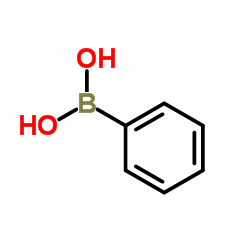 CAS#:98-80-6
CAS#:98-80-6 CAS#:62668-02-4
CAS#:62668-02-4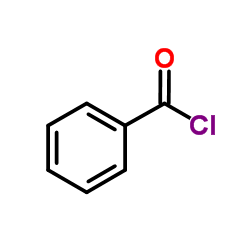 CAS#:98-88-4
CAS#:98-88-4 CAS#:100-52-7
CAS#:100-52-7 CAS#:70-11-1
CAS#:70-11-1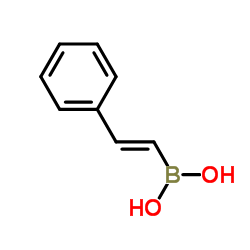 CAS#:6783-05-7
CAS#:6783-05-7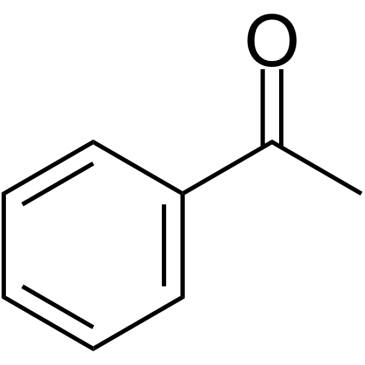 CAS#:98-86-2
CAS#:98-86-2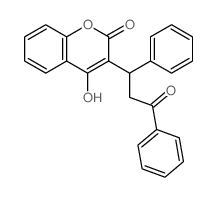 CAS#:10475-15-7
CAS#:10475-15-7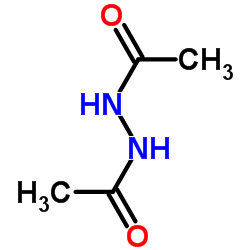 CAS#:3148-73-0
CAS#:3148-73-0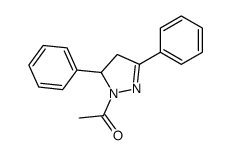 CAS#:30693-34-6
CAS#:30693-34-6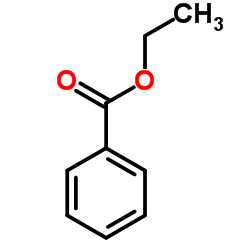 CAS#:93-89-0
CAS#:93-89-0 CAS#:65-85-0
CAS#:65-85-0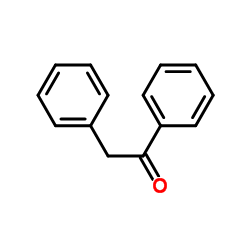 CAS#:451-40-1
CAS#:451-40-1 CAS#:144791-56-0
CAS#:144791-56-0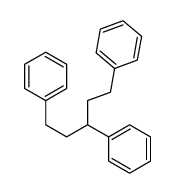 CAS#:1520-41-8
CAS#:1520-41-8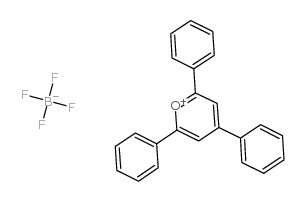 CAS#:448-61-3
CAS#:448-61-3
